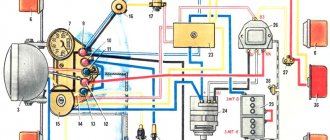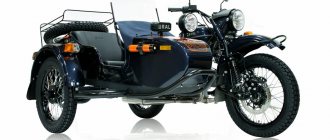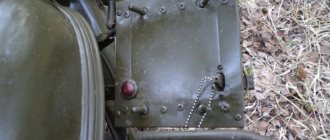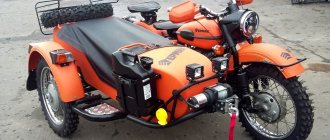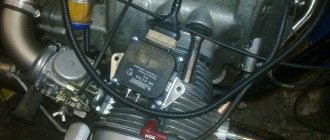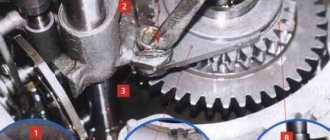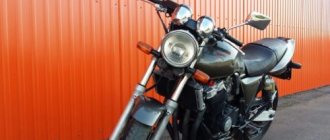Author: Kot shashlik
12 May 2015 12:35
Tags: auto motorcycle motorcycle Ural
17395
7
1
When in the late 30s of the last century the USSR considered a project for the production of heavy motorcycles for the needs of the Soviet army, no one suspected how deep a cultural layer lay in the history of domestic technology.
0
See all photos in the gallery
Apparently, the original technical specifications, which included the requirement for Ural motorcycles to get there at any cost, still does not allow the plant, despite all the difficulties, to close the workshops forever.
0
One can feel a persistent desire to realize in this brand of motorcycles, so beloved not only by Russian but also foreign bikers, all the potential inherent in them. And many others can only envy this perseverance. Ural is, perhaps, one of the few legacies of the Soviet Union in demand on the world market, which holds its mark and commands respect by its very appearance. The progenitor and ideological inspirer of Soviet engineers BMW R-71.
Advantages and disadvantages of the Ural motorcycle
The Soviet classics appealed to motorcyclists all over the world because of the following advantages:
- excellent maintainability and reliability. In most cases, a motorcycle can be easily repaired in the field, because its design is quite simple. If you properly care for your equipment, it can last for several decades. And the domestic bike is not picky about the quality of oil and fuel;
- high cross-country ability. Perhaps the main advantage for which the motorcycle was valued during the war years, being a full-fledged combat unit. All Ural models feel great off-road, but at high speeds they lose stability.
Heavy Ural motorcycles are loved by Russian and foreign consumers.
They are not without their drawbacks:
- high fuel consumption at low speed. Experienced motorists reduce gasoline consumption through modernization, so this disadvantage can be combated;
- high price. The price of a new Ural motorcycle ranges from 500 to 650 thousand rubles, which is comparable to buying a new budget foreign car. The cost of motorcycles increased due to the fact that developers began to use foreign-made spare parts for the Ural motorcycle, which led to an increase in production costs.
The first motorcycle or the very beginning of motorcycle life. How it all happened and what conclusions were drawn. Back in my first post, consisting of 4 parts, I said that for me the most beloved and valuable motorcycle is the Ural. But I never made a post about him. But for many, he was the first guide to motorcycle life. For me, it was with this motorcycle that the understanding of what came from what and where began, the first steps in repair, in tuning (perhaps in collective farming, but then it didn’t seem like that), in harmony with myself. So, the history of all this began back in 2006. October, sunny and warm, it’s time to go out and pick up a motorcycle. When I arrived, I didn’t see (or didn’t want to see) some assembled elements, namely carburetors, lack of normal painting, speedometer, etc. and so on.
His first photo =)
Having dragged this handsome man, we began to dashingly and quickly assemble it. It was necessary to assemble the carburetors, but there were no throttle cables. The solution was not found immediately, but it was found =) There was an ordinary wire, quite strong and thin. Everything is assembled, everything is installed. It's time to go. 5 people loaded onto the motorcycle and flew away =)) Works smoothly and well. This didn’t last long at all and it all led to a logical question: “Why does it pull so BAD??” Everyone has zero repair skills, except that Nikolai had 5 Urals =)) This is where my acquaintance with the repair of the Russian motorcycle industry began. On Nikola's advice, the pistons and rings were changed, and the valves were ground in. We start it up, it works, but ignorance of the laws of break-in is known... it’s not that we didn’t break it in... we just didn’t do it like a child =)) As a result, we replaced the pistons again. But to avoid misunderstandings, the cylinders were bored out for the third repair, respectively, the rings and pistons were also the 3rd. Everything is installed, everything works, everything rolls. But due to ignorance of the theory, there were plenty of questions, although there was a well-known book from the publishing house Ranok, but there was little that was clear to me =) So my brother and I drove off until May 2007, gradually adjusting the valves, applying sealant to the valve cover gaskets and whatnot without doing =)) The appearance was tired, since the paint that was used on the motorcycle was not paint, but rather a parody. After the rain it washed off like gouache. What to do??? Repaint. I won’t talk at length about this well-known process, but black suited him very well =))
By mid-summer, a knocking noise begins to be heard from the engine. What's happened?? They tried to figure it out for a long time, but in the end it turned out that the place for the main bearing turned out to be in trash. Apparently before this they burned this motorcycle, although I was told about it =)) What should I do??? Install the engine from the Dnieper. Nikolay killed his last Dnepr motorcycle and kindly gave us the engine. We capitalized it, installed it and drove off =) What can I say, everything seems to be working and running.
In 2008, another motor from the Urals was assembled, which Kolyan had and which I managed to buy from him for 500 rubles. In general, the return of the Ural engine to the Urals did not lead to good things. The general deterioration of the engine after Kolyanych’s drunken firing left me no choice and the Dnepr was put back. No, it is possible to restore the engine, but it is troublesome, expensive, and unnecessary. Moreover, at the moment the crankshaft has knocked in it. Tumbling doesn't lead to anything good =)) And now more about my personal period in the life of a motorcycle =) In 2008, my brother assembled his Zazotsikl and the motorcycle became completely mine. On the one hand, class, and on the other, very little, but that was later =) At that time, almost everything about the motorcycle was not satisfactory. The paint began to rust and fall off (cheap crappy paint), on the protection of the legs there were two ignition coils from a VAZ (they work flawlessly to this day). I decided to tint the frame and at the same time do some work on the collective farm. Anything and everything was painted, but no primer. It simply wasn’t there. A tachometer, mirrors with turn signals, fog lights and a bunch of other small things that were very necessary from my point of view were installed =) What can I say. I was happy with my tuning. Now I would be ashamed, but then =)) In 2009-2010, my battery began to boil, and the cause was the generator, relay and all these fake whistles. The electrolyte spilled onto the frame, I drained everything I could almost to zero to prevent boiling over =)) There was no money for a new relay. The shock absorbers and front fork were completely leaking. Nothing worked at all. Of course, my hands were not made of ass, but there was no time to repair all this. Study, work in the village, etc. and so on. The engine is from the Urals, which then knocked. One carburetor and heating system (spiral on the pipe) But in 2010 a turning point occurred. I was sick of all this carelessness and I decided to finish everything. First of all, I disassembled half the wiring, threw out the non-working tachometer, bought a new relay from Lawn (it still works to this day), tore off all the old paint from the damaged areas, painted it with a good primer, and hid the ignition coils under the gas tank.
Here is a photo from the collective farm, but work on eliminating the problems has already begun =)
Separately, I’ll say that I didn’t worry too much about repairing the fork and shock absorbers. I replaced all the consumables in the rear shock absorbers, filled them with oil and they still work for me. I changed the oil and seals in the fork, but one blade is still leaking. Apparently the output is huge, but it is possible that it is broken. In general, he began to look like candy =)
After the repair, the motorcycle flew and flew. I learned to ride on it without a stroller on ice, in mud, and in general it still replaces my endurik =)) At the end of 2012, the beauty needed painting again. Although this is not surprising, because my whole path is forest, swamp, mud. Finally, I decided to deal with the wiring, which included wires from an alarm system, a stroller that had been gone for a long time, a tachometer, and whatnot. In the end, after spending about 6 hours, I completely assembled new wiring. At the moment, the motorcycle has been sitting for 6 months, waiting for a new battery, carburetor, and at the same time a fork rebuild. What conclusions did I draw?? There is no equipment that does not require maintenance, you don’t have to farm it, you have to do everything well so that you don’t have to repair it again and again =) And to be honest, I will never sell it. Firstly, there is no point, since my whole soul is invested, and secondly, this is the first and probably the most favorite motorcycle =)) And in general, this is the best motorcycle in the world =))) Thank you all for reading =)
Specifications and model description
All modern Uralov models (Tourist, Tourist 2WD, Gear-UP and Troika) have similar technical indicators:
- Fuel tank capacity 19 l.
- The maximum speed it can reach is 105 km/h.
- Fuel consumption: in city driving conditions - 6-7 liters per 100 km, in highway driving conditions - 4-5 liters.
- Engine: 2-cylinder, 4-stroke boxer OHV, 745 cc. cm., power 42 hp.
- Starting system: kickstarter and electric starter.
- Front brakes are hydraulic disc, rear drum.
- The front suspension is wishbone with spring shock absorbers, and the rear suspension is pendulum with hydraulic shock absorbers. The Troika has a telescopic front one.
All modern Uralov models have similar technical indicators.
Design diagram
Diagram of the Ural motorcycle:
1.Engine. 2.Frame. 3.Clutch and gearbox. 4. Gear shift pedal. 5.Front fork. 6. Steering wheel. 7. Gas tank. 8.Carburetor. 9.Battery. 10.Generator. 11. Relay regulator. 12.Front shield. 13.Rear shield. 14.Headlight. 15. Tail light - rear wheel suspension. 17.Muffler. 18.Trigger pedal. 19.Kick. The Ural motorcycle with a sidecar is designed in exactly the same way.
Features of the electronic system
At first, the Urals were equipped only with a mechanical ignition system, but practice has shown that if there is wear, such a system needs frequent ignition adjustment.
Electronic ignition for the Ural motorcycle is a useful modification that allows you to operate the bike in harsh Russian conditions.
Electronic ignition on the Urals lasts much longer, and the likelihood of failure is much less. This is the best option for those motorists who prefer to maintain their equipment themselves. The electronic system is easier to operate and can also extend the life of the spark plugs, because with mechanical ignition they are subjected to greater stress. This will also reduce fuel consumption. Of course, we cannot mention that the bike will be easier to start in the cold.
The electronic ignition on the Urals allows you to operate the bike in harsh Russian conditions.
Contactless ignition systems
Previously, enthusiasts assembled the contactless unit using homemade methods or rearranged it from other motorcycle models, but today it can be easily purchased ready-made.
The following sets are in demand on the market:
- "SoveK". The manufacturer offers not only contactless ignition, but also microprocessor ignition, which is recognized as more advanced. The system is very easy to install and is not sensitive to voltage surges.
- "Saruman." Reliable assembly, which can be equipped with either a Hall sensor or a modern optical one. There is protection against power surges and light indication.
Motorcycle repair "Ural"
All components of the motorcycle are easily accessible, which makes it extremely repairable. Repairing a Ural motorcycle with your own hands is a kind of fun for the most outcast motorcycle enthusiasts, but for the process to really bear fruit, it won’t hurt to learn how to properly disassemble the main components of the bike.
You can do the repair of the Ural motorcycle yourself
Removing the flywheel
Before removing the flywheel you must:
- Remove the engine from the motorcycle and disconnect the gearbox from it.
- Remove the clutch disc pack.
Procedure:
- First you need to bend the edge of the flywheel bolt lock washer.
- Using an open-end wrench installed in the spacer between the thrust disk mounting screw and the gearbox stud, we secure the flywheel from turning.
- Using a 41 mm socket, you need to loosen the bolt and turn it out a few turns.
- Armed with a two-jaw puller, we remove the flywheel from the crankshaft shank.
- The flywheel key is removed using pliers.
Removing the timing belt
Sometimes the timing gear does not want to be removed at all only with the help of a puller. In this case, it needs to be heated.
Removing the flywheel on the Ural
Disassembling the clutch
To access the clutch of the Ural motorcycle, you first need to dismantle the rear wheel and disconnect the gearbox from the internal combustion engine. Next, unscrew the six screws holding the flywheel.
Procedure:
- Using a screwdriver, knock out the tabs from the slots of all screws.
- Unscrew the two bolts located opposite each other and screw in two auxiliary bolts in their place to relieve the thrust disc from the spring pressure.
- Unscrew the remaining four bolts and only then the auxiliary ones.
- Remove all discs and springs.
Removing the cylinders
To remove the cylinder, you must:
- Remove the pipe from the left cylinder.
- Remove the carburetor. In case the head needs to be repaired.
- Remove the valve cover, which is held on by four nuts.
- Unscrew the nuts holding the cylinder itself.
Dismantling of cylinders at the Ural
Removing the crankshaft
To remove the crankshaft, you must:
- Loosen the lock washer of the bolt holding the drive gear and unscrew it.
- Remove the gear by first removing the key.
- Remove the cotter wire.
- Unscrew the bolts and remove the cover.
- Remove the oil pump and pull out its rod.
- Hold the rear end of the crankshaft and pull the front end and bearing into the crankcase.
- Rotate the crankshaft so that the flywheel key groove is on top.
- When lifting the front part of the crankshaft, you need to lower the rear part, removing the part itself.
Engine assembly
To disassemble the engine you need:
- Unscrew the nuts securing the cover and cylinder head, and then remove these elements.
- Remove the cylinder from the studs.
- Remove the retaining rings using a puller.
- Remove the crankcase cover by unscrewing the screws securing the timing mechanism.
Do-it-yourself engine assembly - Remove the plug in the upper part of the crankcase by unscrewing the camshaft flange, and also remove the oil pump drive.
- Remove the camshaft using a tool.
- Bend back the washer and unscrew the screw securing the clutch drive gear.
- Unscrew the bolts of the upper disk.
- Unscrew the bolt that holds the flywheel, and then remove it from the crankshaft.
- Remove the bolts from the rear bearing, engine pan and filter with oil pump.
- Remove the crankshaft from the crankcase by pressing it out of the front bearing.
This procedure will help you get to the engine in order to fully diagnose it and carry out repairs. To assemble the Ural motorcycle engine, you need to perform all the manipulations in the reverse order.
Gearbox tuning
If the gears do not shift correctly, this may mean that the Ural motorcycle gearbox needs adjustment.
Foreign-made spare parts are used in the modern Ural motorcycle
First you need to put the bike on the stand, and then do a few simple manipulations:
- Set the second gear using the hand lever and press the pedal to third gear. If the ball and the hole do not align, you should loosen the bottom screw a little. This will help get rid of lack of inclusion. It also happens that the hole jumps over the ball, which leads to switching. Then the screw needs to be tightened.
- Shift from third gear to second. If the hole does not reach the ball, then you need to loosen the upper adjusting screw, and if it jumps, screw it in tighter.
A classic that never gets old
0
Literally everything speaks in favor of this comparison: the reliable boxer 40-horsepower engine, the rough powder-coated frame and cradle, and even the sound of the engine running, characteristic of the Urals. At the same time, standard Brembo disc brakes and high-quality Sach suspension components indicate that IMZ does not live solely on the legacy of the Soviet past, but is trying to make Ural as modern and competitive as possible. Excellent colorful additions, which also have enormous practical benefits, were camouflage awnings for the stroller, protecting luggage from dampness and dirt, and gasoline cans, which were very useful when the desire to drive forward was tripped up by the lack of gas stations in the area.
Approximate cost of accessories and spare parts
The modern Ural motorcycle uses foreign-made spare parts. They are quite expensive. For example, a complete engine assembly will cost around 30 thousand rubles. A carburetor for a domestically produced Ural motorcycle can be found for 1,000 rubles, replacing a driveshaft will cost 5,000 or more, and prices for a crankshaft vary from 5 to 20 thousand. Foreign-made valves for a Ural motorcycle can be purchased at prices ranging from 400 to 700 rubles.
Almost any oil can be poured into the Ural motorcycle - the classics are not picky about its quality.

